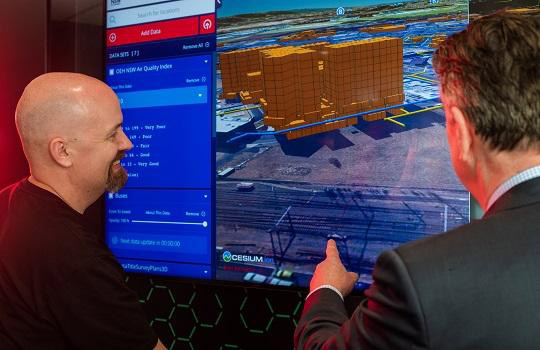
NSW Minister for Customer Service Victor Dominello has officially launched the NSW Spatial Digital Twin, a digital mapping tool set to increase efficiency and reduce the cost of infrastructure planning and development across the state.
The Data61-developed digital twin project presents 3D and 4D (“3D plus time”) visualisations of the Western Sydney area, with detailed representations of both built and natural environments, displaying buildings, strata plans, terrain, property boundaries, utilities including power, and water and sewer pipes.
While the first phase of the Digital Twin is limited to visualisations of the Western Sydney area, including the Western Sydney City Deal and Greater Parramatta to the Olympic Peninsula, future releases are expected to expand the area of coverage across the whole of New South Wales.
Mats Henrikson, geospatial web systems group leader at Data61, said the platform will be a boon to planners, developers, and policymakers, providing an invaluable tool to make informed decisions on urban planning and future infrastructure works, as well as to better communicate infrastructure development plans to citizens.
“The digital twin represents a step change in how we visualise environments and processes taking place in them. Till now decision makers have referred to property boundaries in 2D. Having them available in 3D together with how they have changed over time, and being able to easily share this with other related data makes it much easier to fully understand the context of the boundaries,” he said.
“Cities have never been so data rich as a result of connected sensors and many are growing vertically in addition to horizontally. This creates incredible opportunities to overlay 3D/4D data from satellite and drone technologies which is spatially accurate, to show the bigger picture of what’s happening above and below the ground over time.”
“An infrastructure developer can now use the digital twin to identify the location of underground utilities before building works commence, or see the potential impact of planned future infrastructure.”
Developed by Data61, the CSIRO’s dedicated digital research and development arm, alongside the NSW Department of Customer Service’s Spatial Services, the digital twin is based on the open source TerriaJS platform, also developed by Data61.
TerriaJS assembles spatial datasets, utilising digital imagery from Digital Earth Australia combined with hand curation and live querying of online data services. The TerriaJS library itself is based on Cesium ion, a cloud-based visualisation platform for displaying 3D geospatial data through web browsers.
Simon Barry, acting Director CSIRO’s Data61, said the new visualisation brought together world-leading expertise in spatial visualisation, analytics and privacy preserving technologies from across the national science agency.
“By partnering with government and industry across the country, we can harness these technologies into federal collaboration platform enhancing Australia’s smart cities and delivering significant benefit to Australia’s economy,” Barry said.





